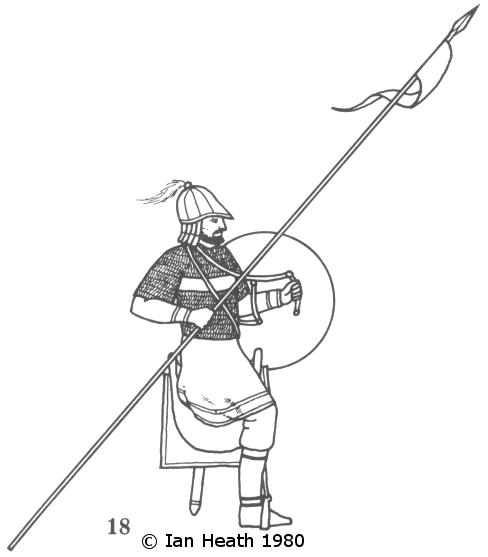10TH-11TH CENTURY BYZANTINE THEMATIC KATAPHRAKTOS
|
An extract from Armies of the Dark Ages 600-1066 by Ian Heath  |
|
An extract from Armies of the Dark Ages 600-1066 by Ian Heath  |
18. 10TH-11TH CENTURY BYZANTINE THEMATIC KATAPHRAKTOS
Thematic troops supplied their own equipment, which could therefore be better than that of their Tagmatic equivalents but was usually worse, especially during the provincial decline of the 11th century. A Thematic muster in the Anatolikon Thema in 1067 saw infantry armed only with hunting spears and scythes and equally ill-equipped cavalry with no horses and a dearth of other arms. Even in the mid-10th century equipment may have often been lacking; in a largely Thematic army led by Nikephoros II, described as 200,000 men by an Arab chronicler, only 30,000 apparently wore armour, and though the figures are improbable the proportions - even allowing for light troops and auxiliaries - indicate a generally low standard of equipment.
This figure, based on a source of c. 1000, is typical of Thematic types, with only helmet and short mail corselet; the breast-strap, frequently depicted being worn by cavalrymen, has no shoulder-pieces. Others would have worn longer corselets, scale or lamellar or carried kite-shields, and there would have been little or no uniformity except, presumably, in shield-devices, crests and lance-pennons. Clothing may have often followed uniform colouration but was otherwise probably a mixture of black, grey, white, brown and green, the other principal clothing colours favoured in the Empire. Bow-armed Thematic kataphraktoi would have been similarly equipped in a wide variety of styles.
The officers and at least the front rank of Thematic units would have ridden partly or, where available, fully armoured horses.